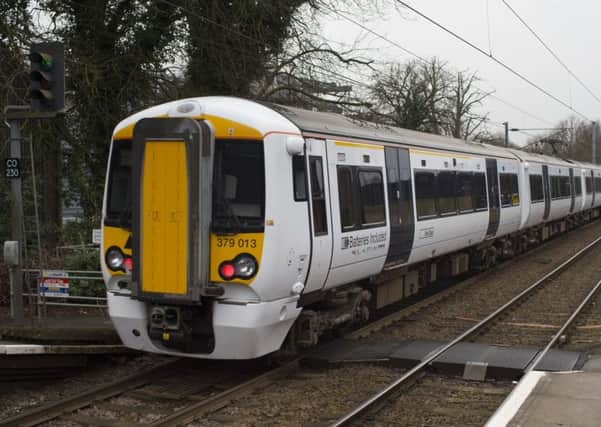Battery-powered bid to create greener railway without electrifying bill


They are also likely to be more reliable than the 27-year-old diesel train which broke down in Edinburgh last Thursday, causing huge disruption.
The innovation is in a new consultative blueprint on the future of Scotland’s railways, launched by Transport Minister Humza Yousaf.
Advertisement
Hide AdAdvertisement
Hide AdIt follows a successful trial in Essex last year using a train converted to run on batteries.
Battery trains already run in Japan.
Electric trains are more reliable than diesels because they have simpler engines and also have superior acceleration, such as from stations, cutting journey times.
The new trains could run on batteries over gaps in the electrified network, then switch to traditional overhead line power to recharge.
The Scottish Government’s Transport Scotland agency has not said which routes they might operate on. However, potential lines include gaps in the electric network in and around Glasgow and Kilmarnock.
Depending on battery range, the technology could also extend the reach of electric trains beyond currently planned limits, such as north of Dunblane and Helensburgh, and into Fife and the Borders.
However, currently available batteries would not have enough charge for the full length of non-electrified routes, such as in the Highlands.
The consultation on Scotland’s Rail Infrastructure Strategy from 2019 stated: “In support of Scottish Government objectives to improve the sustainability of our transport system, we are examining the use of independently-powered electric multiple units, where electric overhead wires currently do not exist, to reduce the Scottish rail network’s reliance on diesel-powered rolling stock and to provide a more affordable alternative to full network electrification.”
The Essex trial, involving ScotRail sister company Abellio Greater Anglia, was over the 11-mile Harwich to Manningtree line.
Advertisement
Hide AdAdvertisement
Hide AdA Network Rail spokesman said: “We know this technology works, and seeing a battery-powered train in timetabled service last year as part of our trial was a huge step forward.
“We are always looking for ways to reduce the cost of running the railway and make it greener, too.
“This project has the potential to contribute significantly towards both those goals.
“We are working with our industry partners to assess the viability of rolling-out this project on a wider scale, but are at too early a stage to say which routes may be involved.”